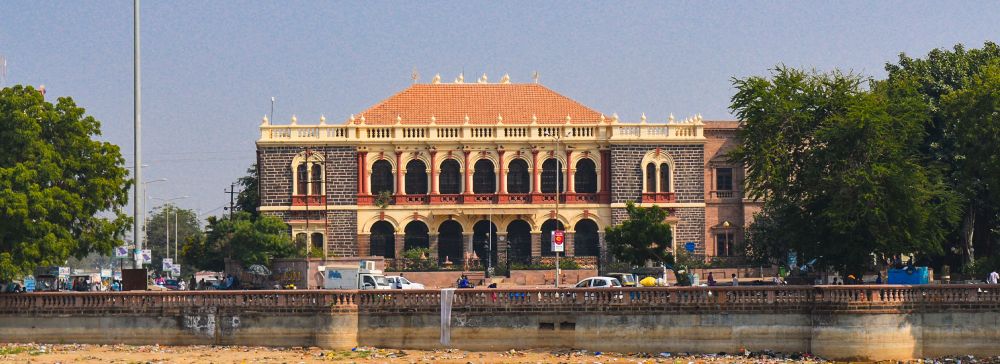

The Kutch Museum, originally known as the Fergusson Museum, claims the title of the oldest museum in Gujarat, India. It is a repository of the rich cultural tapestry and heritage of the Kutch region. The museum was initially envisioned as a part of the School of Arts, established by Maharao Khengarji III in 1877 to commemorate the visit of the then Viceroy of India, Edward VII, the Prince of Wales. It stood as a symbol of the intellectual and cultural exchange that has shaped Kutch's history.
In its early years, the Kutch Museum was home to various artifacts, including Kshatrapa inscriptions, ancient coins, and materials representing the local tribes' linguistics, anthropology, and history. Over the years, the museum has evolved, continuously adding to its collection and becoming a center for historical and cultural tourism.
The museum plays a pivotal role in highlighting the history and tourism of the Kutch region. Within its walls, it houses rare artifacts such as a uniquely built inscriptions section and various archaeological findings showcasing the rich past of the region. Among the exhibits is an admirable textile section displaying Kutch's world-renowned embroidery work along with other crafts like metalwork, woodcarving, and sculptures. These collections not only provide insight into the life of bygone eras but also demonstrate the continuing traditions that remain an integral part of Kutch's identity.
Featuring Gothic-style windows and a facade showcasing a meld of Indo-Saracenic architecture, the museum itself is a historical artifact. It reflects the aesthetic inclinations of the rulers of Kutch and the architectural innovations of their time. The building captivates visitors, providing them not just a cultural but also a visual journey into the history of this region.
The influx of tourists to the Kutch Museum has been consistent, with peaks during the famous Rann Utsav. This annual cultural festival showcases Kutch's vibrancy and traditions, attracting visitors from across the globe. The museum, strategically located near the Hamirsar Lake, has become a must-visit landmark for those attending the festival. As the interest in experiential and educational tourism grows, the Kutch Museum continues to serve as a gateway to Kutch's legendary past and thriving present.
Contemporary tourism trends in the area show a growing preference for sustainable and responsible travel. Visitors are increasingly looking for immersive experiences that allow for cultural exchanges with local communities. The museum’s collection and exhibits provide a context for these interactions, enriching tourists' understanding of the region and fostering a deeper appreciation of its culture and traditions.
The Kutch Museum stands as a bastion of history, offering a comprehensive look at the cultural legacy of the Kutch region. Across the years, it has not only preserved the treasures of the past but has also played a crucial role in informing the narrative of tourism in Kutch. As travel evolves, the museum's significance only amplifies, beckoning travelers from around the world to delve into the heritage of this storied land.